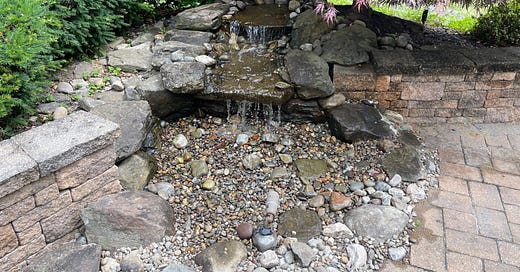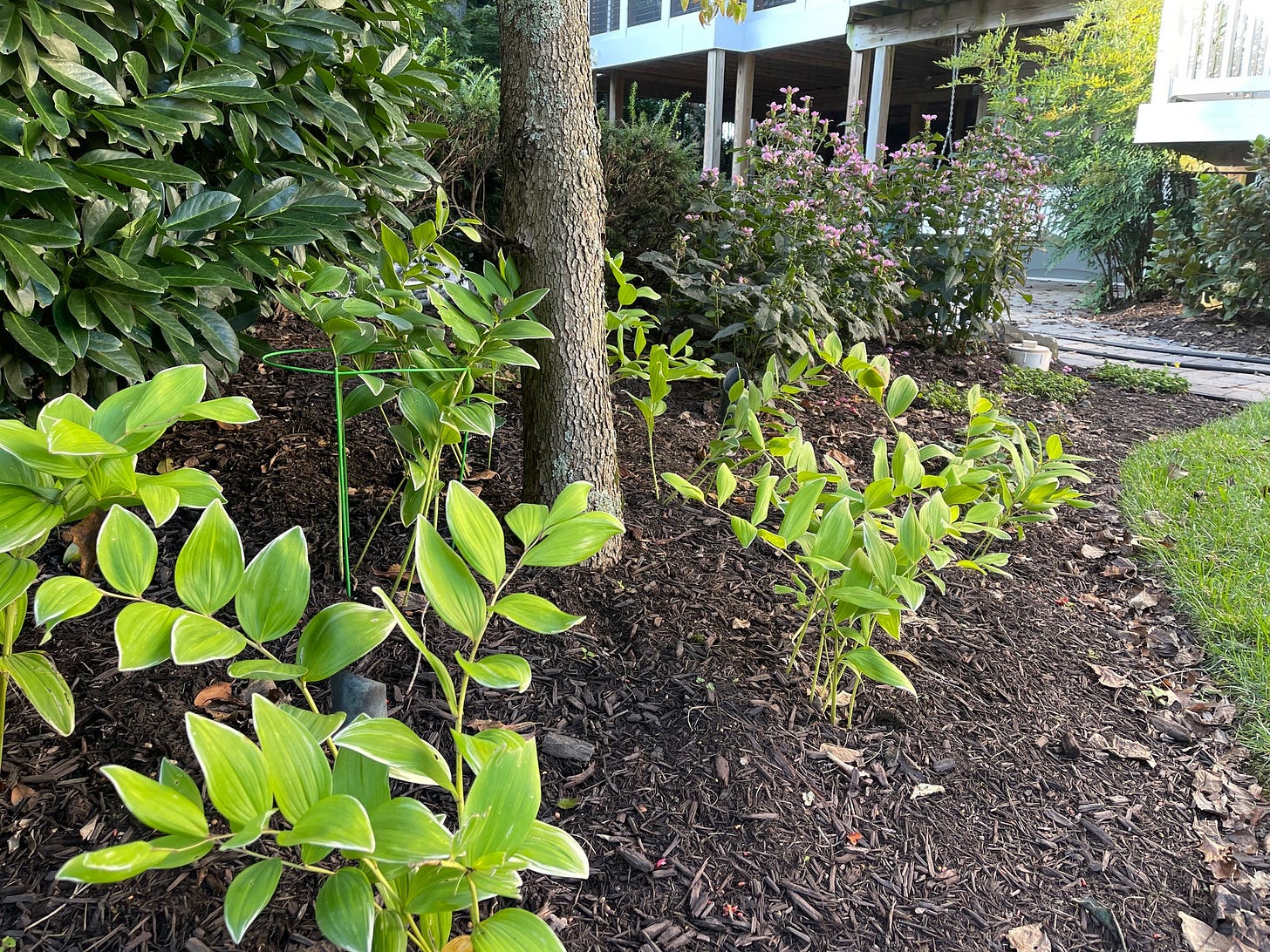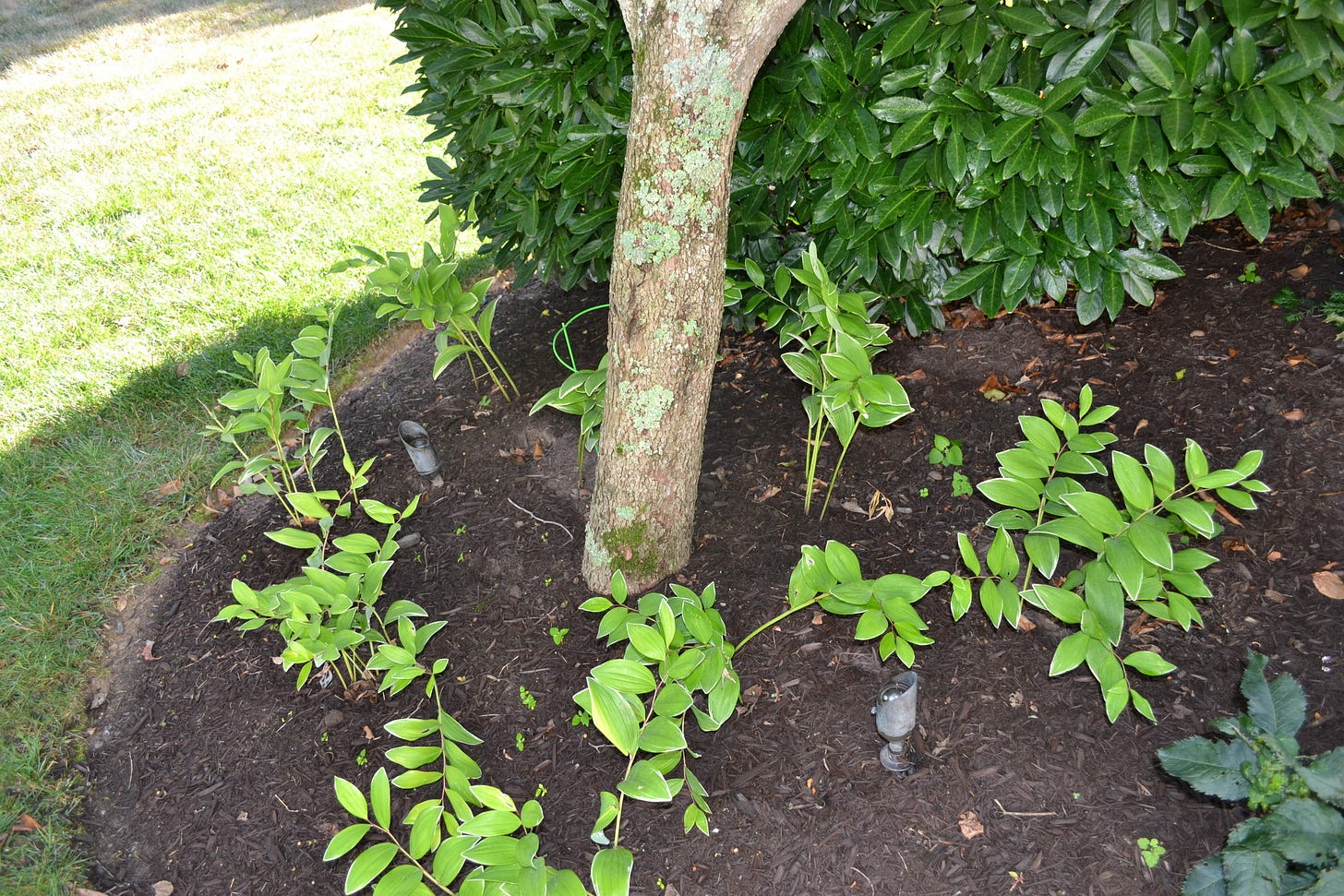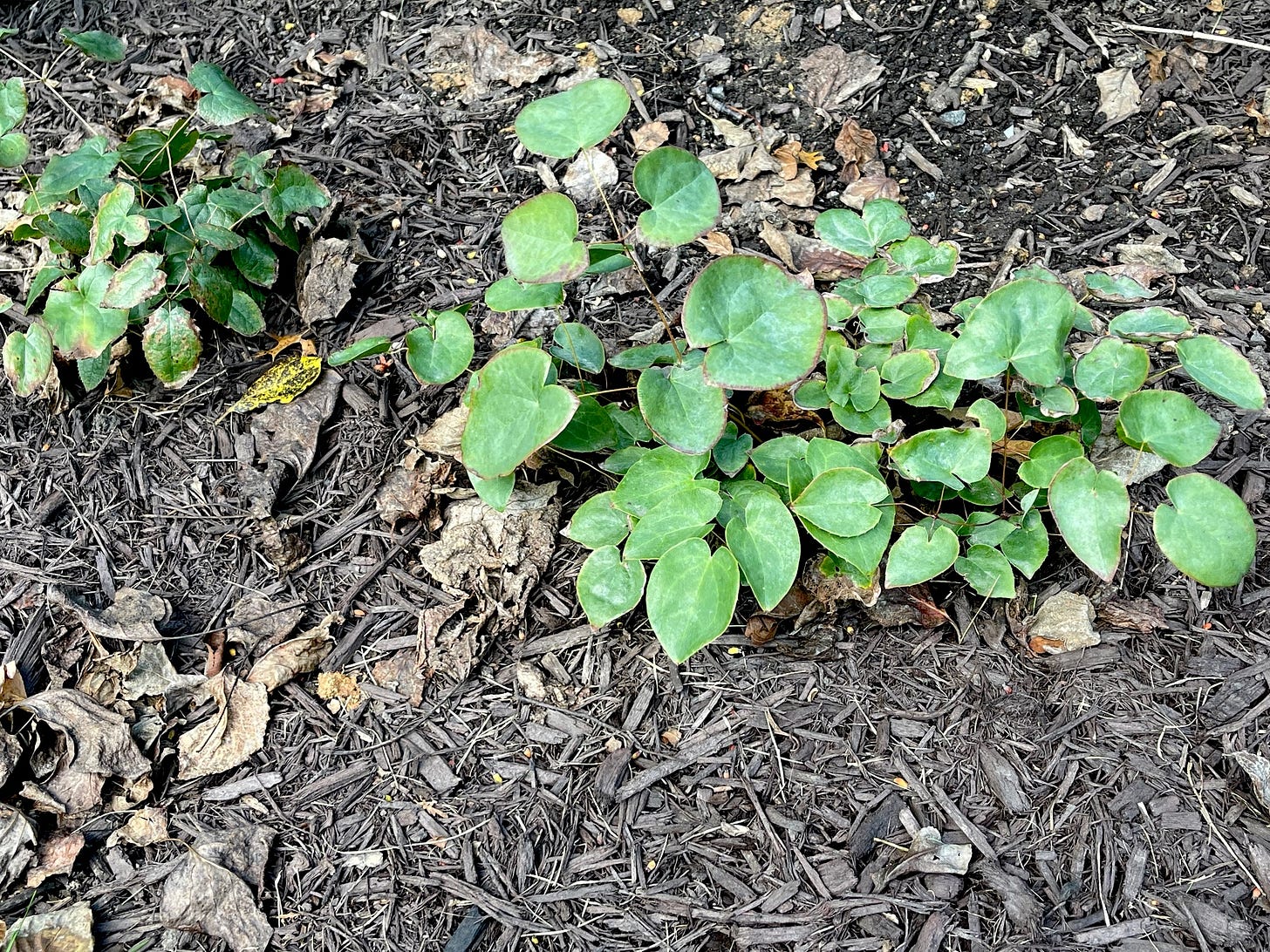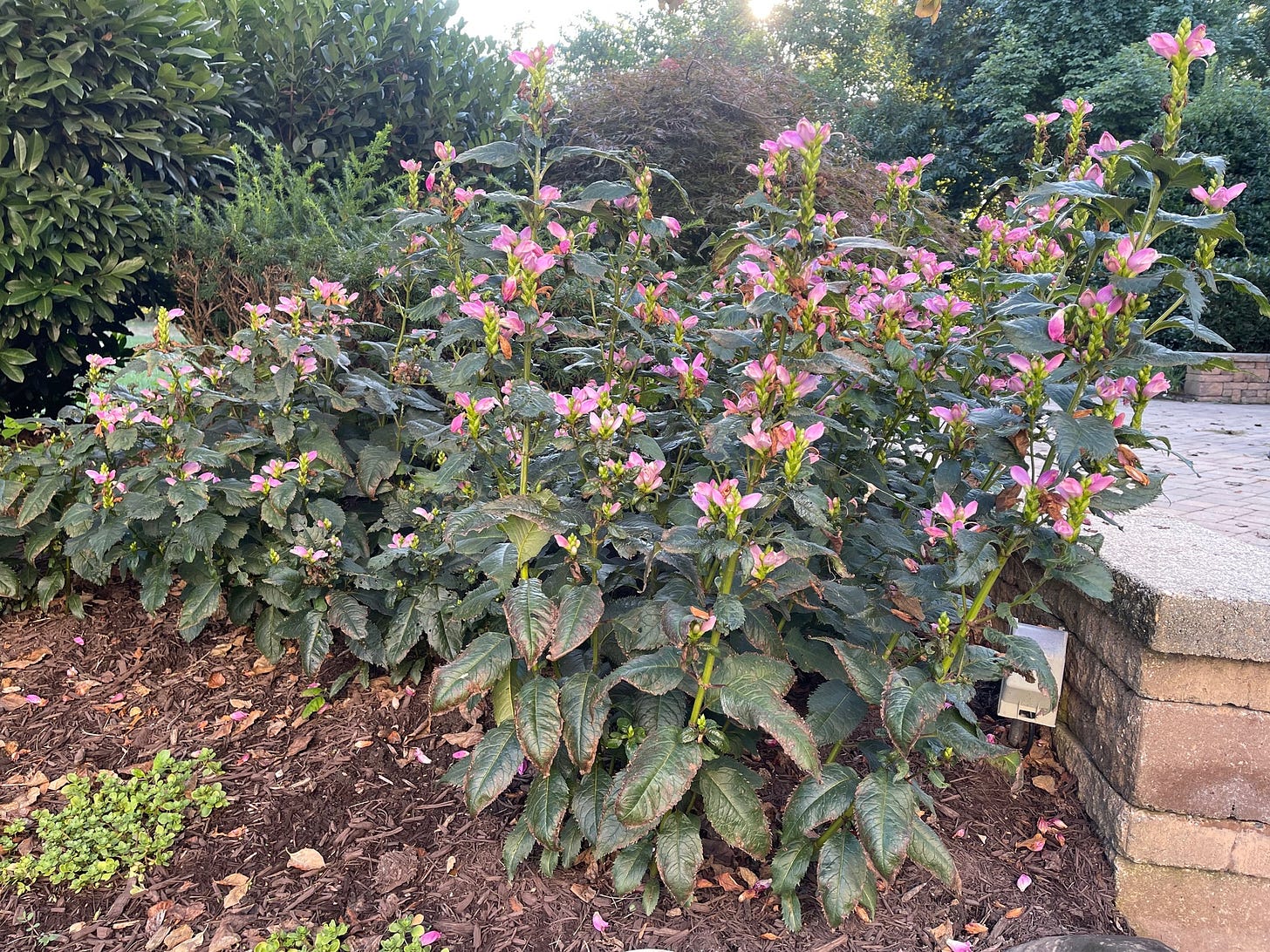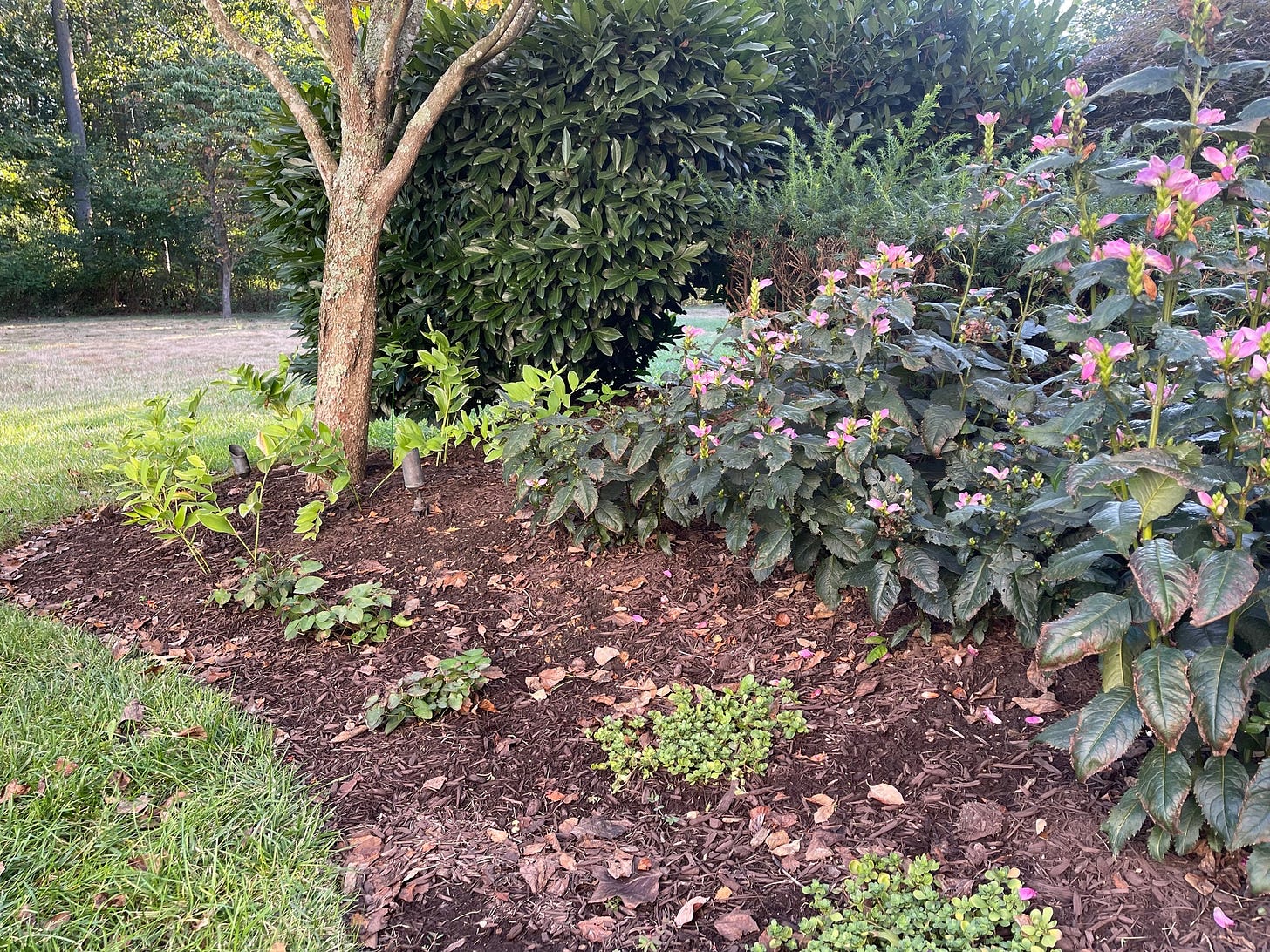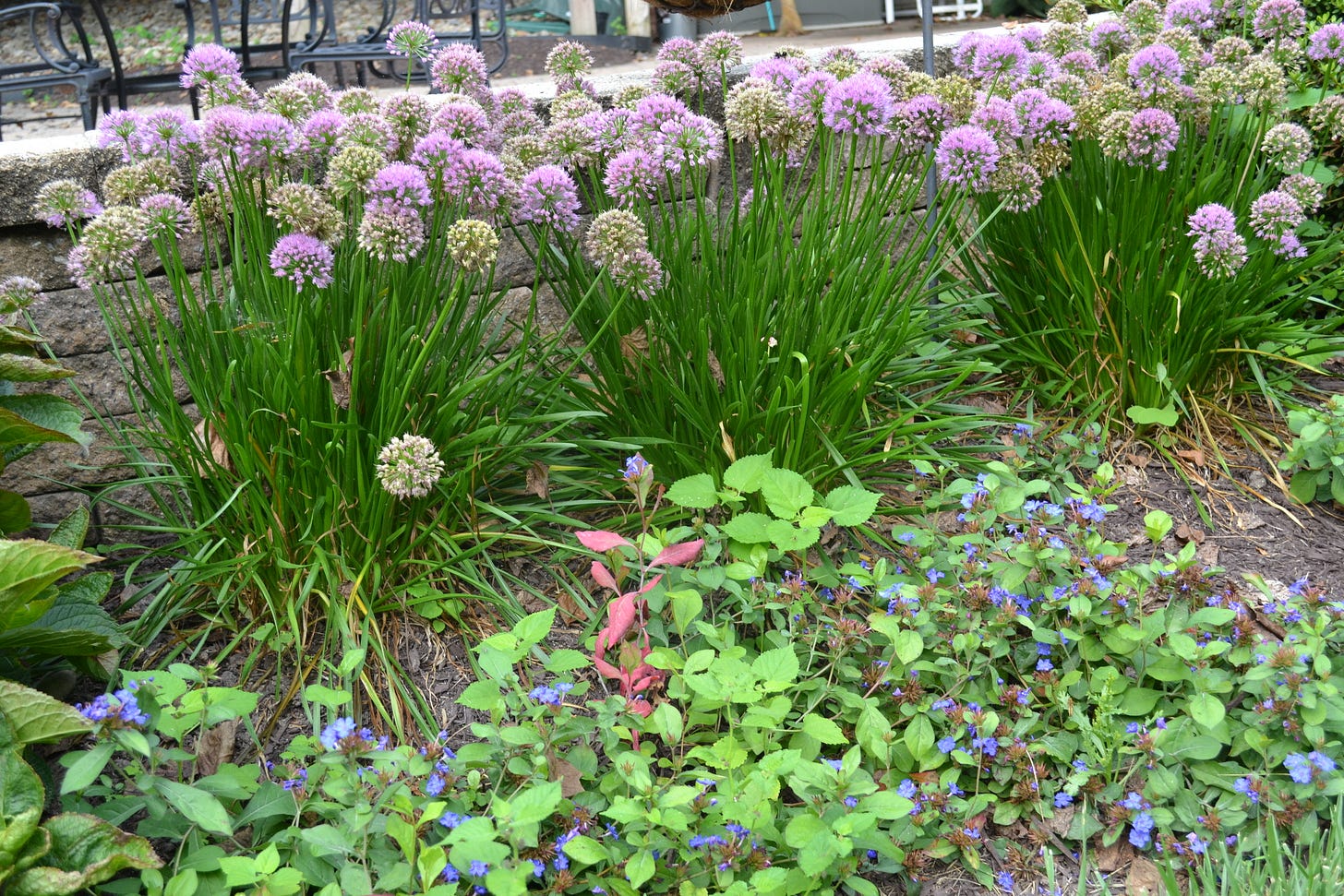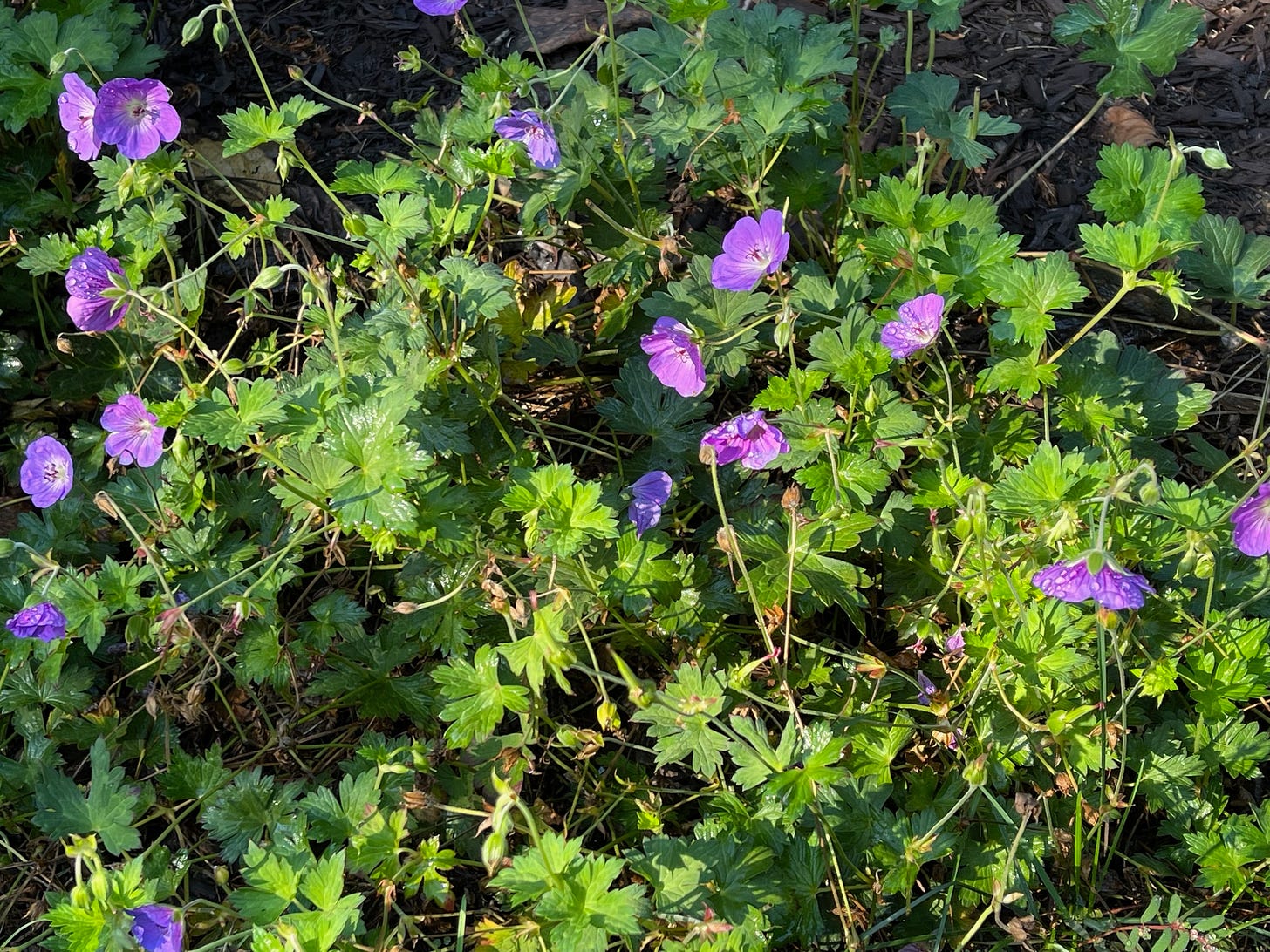The Water Feature Bed
Lots of winners and losers as we tour the water feature bed this morning. No time to dawdle. (Oh no... that sounded suspiciously like something a Type A would say, or write.)
The waterfall bed almost didn’t get built. When the landscape designer at JAMS explained to me that they were going to build a water feature in my perfectly flat backyard that would look like a real waterfall, I just didn’t believe them. They persuaded me that with a little landscaping magic, and the clever use of bushes and plants, the waterfall would look like it burst out of the ground like a wild spring and would be a wonderful attention-getter at the center of the patio. To JAMS’ credit, it really does look like a pretty brook bubbling out of my backyard.
The sun exposure makes this a story of two completely different gardens, one to the east of the Japanese maple which gets full sun during the day for at least the required six hours, and the other plants to the west of the dogwood tree, the Japanese maple, and the sitting wall, getting a lot more shade. The story of the shade plants is much more painful, so let’s start there and get the bad news out of the way.
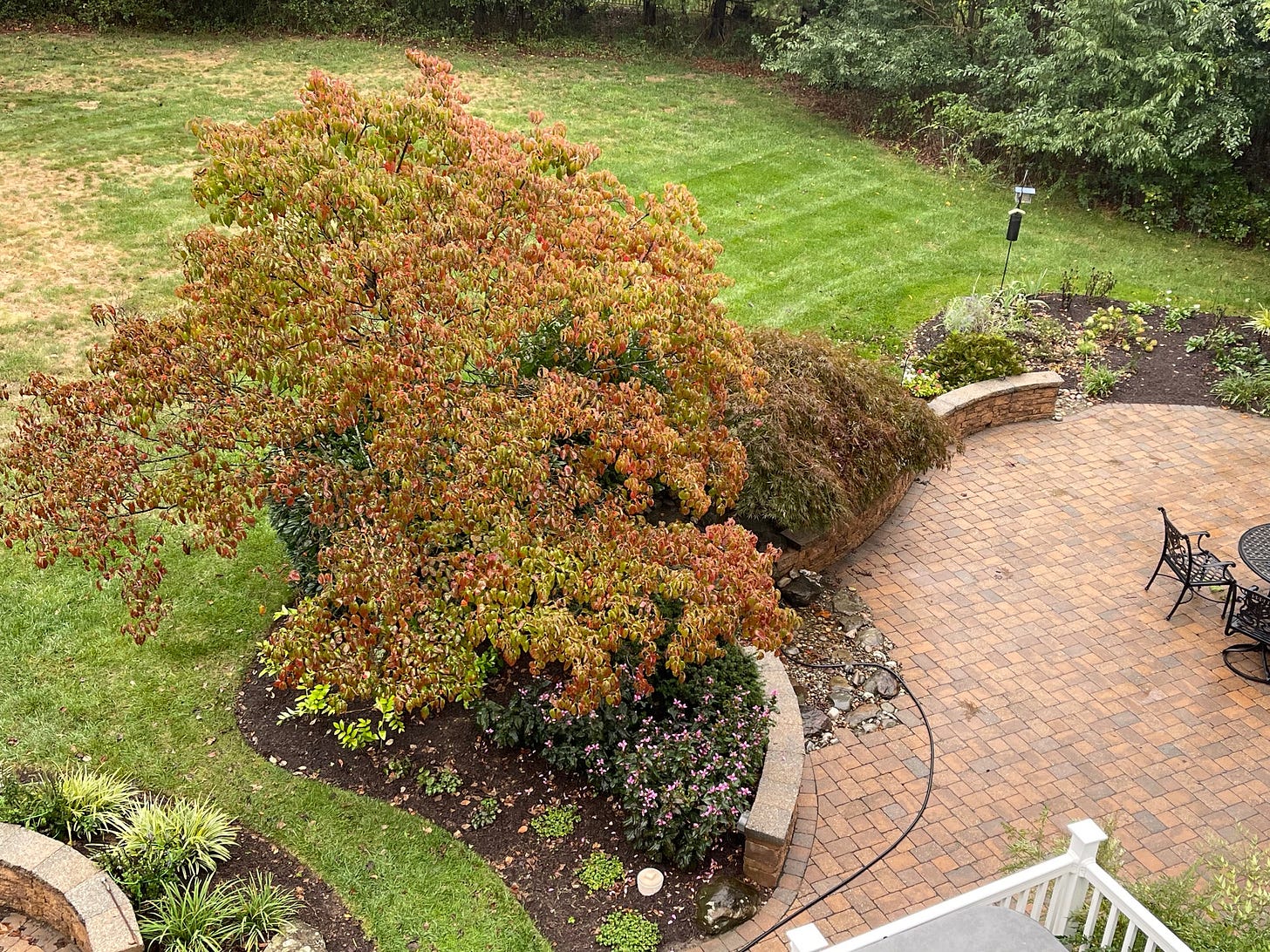
The original plan for the bed called for the installation of seven lady’s mantle, three near the base of the dogwood tree. The other four were planted under the Japanese maple on the sunny side of the bed. Lady’s mantle grow in mounds covered with yellow flowers. I often see them as part of hanging baskets or in flower arrangements. Unfortunately, all of them died, along with the three replacement plants I purchased in my determination to add them to the bed. The word is out in the lady’s mantle plant community that I’m wanted for crimes against horticulture. I’ve sworn off planting lady’s mantle ever again. I’m sure they’re glad to hear it.
Near the lady’s mantle, in what we thought was partial shade under the dogwood, we installed three Rozanne geraniums. One died and the other two got moved to the sunny side of the bed in a rescue operation. Those plants, along with the other geraniums getting full morning sun there, are thriving. We also planted five shale barrens sedum along the western edge of the bed as a ground cover. I recently dug up the two plants closest to the shade and declared them a total loss, but I’m still hoping the other three will do something next year. I now know from experience that certain ground covers, like creeping jenny, annoy me when they grow so fast that they take over a bed. But I’ve also learned that shale barrens sedum, a ground cover that is not exactly setting land speed records for growth, is just as annoying.
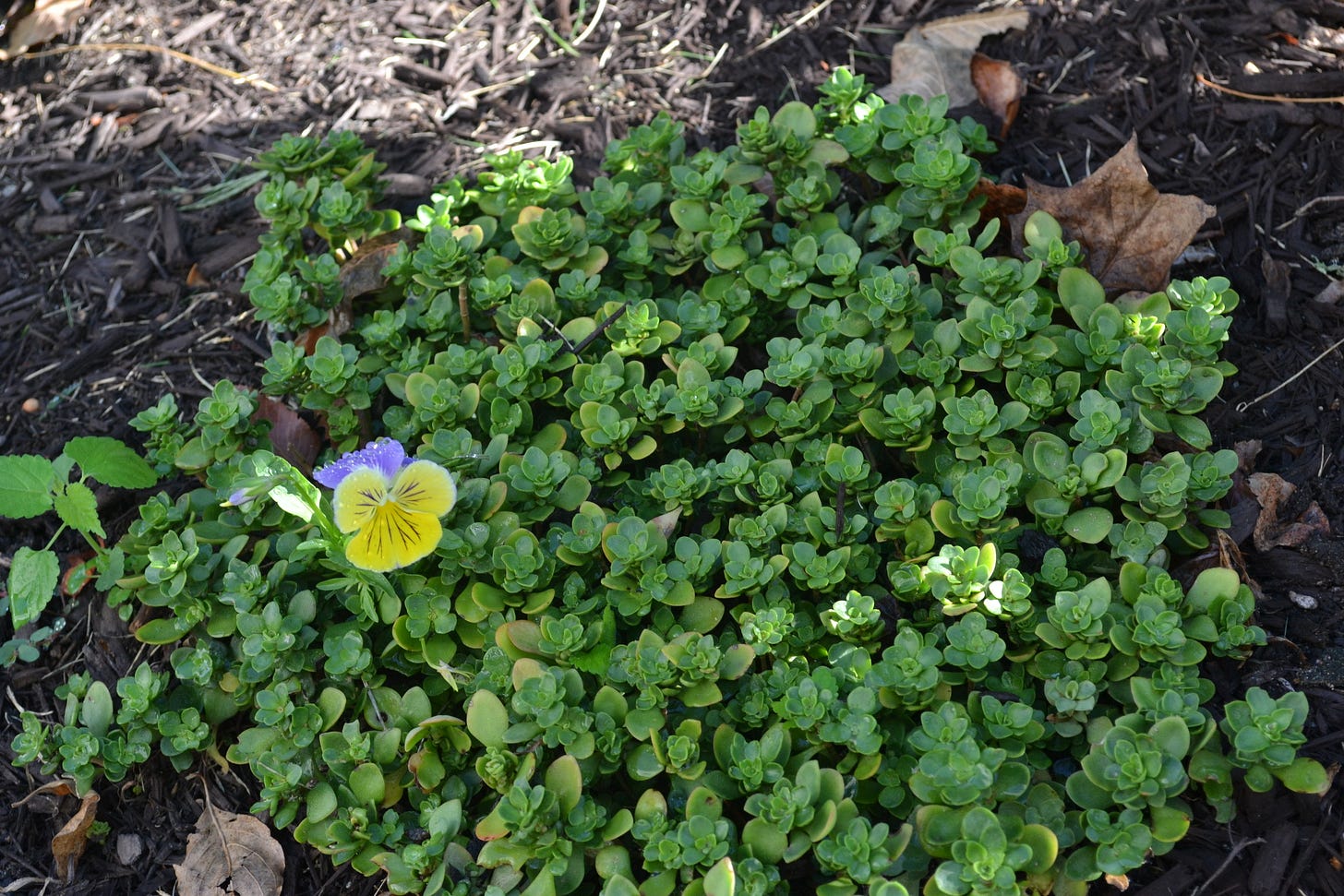
To replace the geraniums under the dogwood, I planted eight Solomon's seal. I thought the plants were particularly robust when I picked them up from the nursery, standing roughly 2 feet tall. Solomon’s seal loves shade. It’s done well through this summer and into the fall. I haven’t lost any, which is great because I love the striped leaves on this plant and the tiny white flowers it shows in the spring. The leaves turned yellow as we went deeper into the fall, creating a nice point of interest in the bed. I’ll be interested to see how it does next season. I’m hoping it will fill in and create a beautiful little spot under the dogwood tree.
The most recent purchase for this side of the bed was three yellow epimedium plants. I planted epimedium in a bed on the other side of the garden, in front of the arborvitae trees that line the steps from the driveway to the patio, and frankly, they haven’t done much. Associates at the nursery, and pieces I’ve read, declare these shade-loving plants so hardy that they often take over a bed. They are supposed to be aggressive growers that make a beautiful groundcover with pretty yellow flowers in the spring and surprisingly pretty foliage in the fall. I had a space to fill between my sedum and my Solomon's seal, so I thought I would try them again. I figure either the sedum or the epimedium will eventually get established next year. May the better groundcover win.
You’ve been staring at them the whole time, so let me finish up talking about this side of the waterfall by bragging about the most vibrant plant in the garden this year, the hot lips turtlehead. I know, you have to get over the unfortunate name, but the flowers are just spectacular. The healthiest plants soar over the sitting wall and make a dense and gorgeous display of pink, football-shaped, flowers. I don’t know why the turtlehead are doing so well since they are planted on the shade side of the waterfall and they are supposed to do best in full sun, but there you go. And because the turtlehead grows at the end of the wall near the patio, you practically walk right into them as you tour the gardens. The turtlehead won the Ken Solow Golden Garden Award in the fall of 2023. What an honor for them. It is well-earned.
If you can stand a little less drama, let's walk over to the other side of this bed, to the east of the waterfall. Here the news is a lot better, I’m sure because these plants get their full quota of morning sun. At the far end of the wall is a healthy big leaf hydrangea that my wife tells me bloomed until it lost a battle with deer a few years ago. I had no interest in the garden a few years ago so I take her word for it. What I’ve seen for the past two seasons is a plant with robust growth that hasn’t bloomed yet. I’m going to prune it back once the weather gets cold and try to parse through the “old wood – new wood” conundrum that I seem to always face when dealing with hydrangea and rhododendron. The rule is, don’t prune the old wood where new buds will grow over the winter and into the spring . . . unless there are no buds, and then it probably doesn’t matter? How confusing.
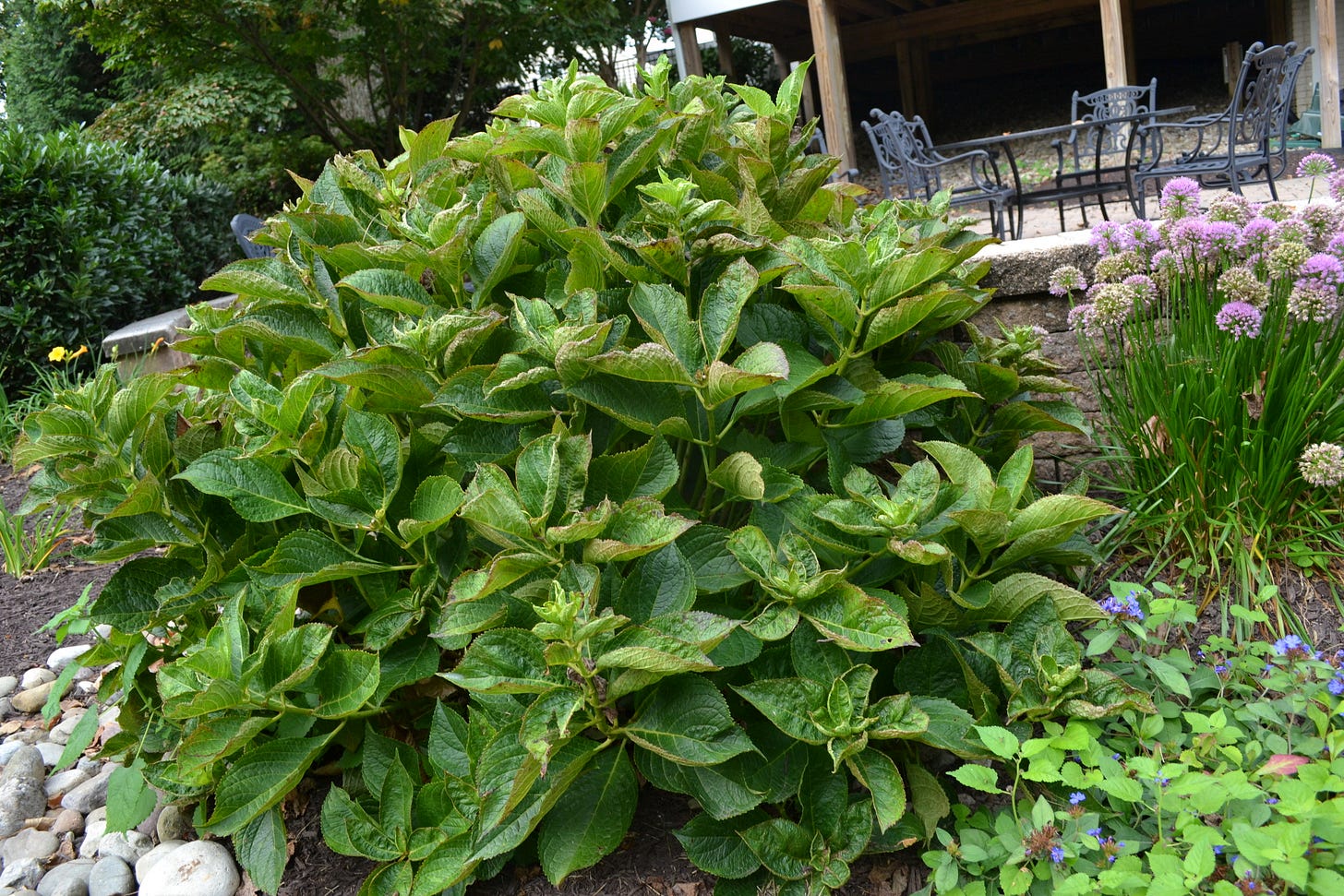
One of the biggest surprises has been the combination of millennium allium and plumbago near the end of the wall next to the hydrangea. Allium is part of the onion family. They grow from bulbs and, not surprisingly, stink like onions. But the flowers are a beautiful pale blue ball of spiking petals that form a cloud of color above the plant. When combined with the blue flowers of the plumbago, it looks terrific. The allium tower over the plumbago and make this a beautiful place to hang out for a few minutes on morning patrol.
The Rozanne geraniums have been another positive surprise. Three of the geraniums were rescued from the shade side of the bed when they were near death last year. But this year they all seemed to thrive in the morning sun, throwing off pretty flowers the entire season. There is room for these plants to spread towards the shade of the Japanese maple. The space under the maple tree was originally planted with lady’s mantle, and you already know that tragic story. I’ll be curious to see how the geraniums fill in next year.
I hope you enjoyed this morning’s tour. Next up, I’ll share some tips on how to become a gardening expert in just one day. That’s right, after one day invested, you’ll bask in the adoration of the gardening public and deal with paparazzi for the rest of your life. I can’t believe I’m going to publish this valuable information, but I am. Don’t miss the next post, here on The Painful Education of a Type A Gardener.

